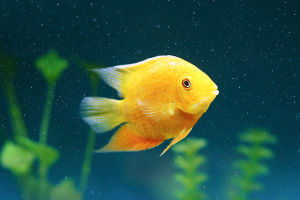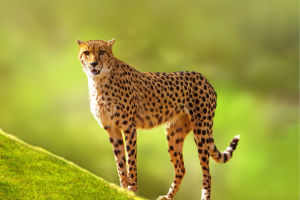The common squirrel monkey is a small, captivating primate, scientifically classified under the genus Saimiri.
Their lively nature and charming appearance have garnered widespread admiration.
In their natural habitat, squirrel monkeys exhibit remarkable adaptability. They inhabit the tropical rainforests of South America, with a particular prevalence in the Amazon Basin. These rainforests offer a rich array of resources and complex environments suited to their needs.
Squirrel monkeys are notably small, with adults typically weighing between 0.5 and 1 kilogram and measuring about 25 to 30 centimeters in body length. Their tail, almost as long as their body, is both flexible and elongated, aiding them in maintaining balance as they navigate through the trees.
Their fur is generally gray or brown, while the hair on their abdomen and face is lighter, ranging from yellow to white. This color contrast not only makes them visually striking but also serves as camouflage in the tree canopy, helping them evade predators.
Squirrel monkeys primarily inhabit tropical rainforests, taking advantage of the abundant food resources and complex habitats. They are arboreal creatures, spending most of their time in the trees.
Their diet mainly consists of fruits, insects, nectar, and small invertebrates. The diversity of their diet ensures they receive the necessary nutrition to thrive in their rainforest environment.
The social structure of squirrel monkeys is intricate and organized. They typically live in groups ranging from 20 to 50 individuals. These groups have a defined hierarchy, maintained through various social behaviors.
The leader, often the most dominant and experienced individual, is responsible for guiding the group to food sources and selecting suitable habitats.
Interactions within the group include activities such as feeding and grooming each other. These behaviors strengthen social bonds and contribute to the overall harmony of the group.
Squirrel monkey reproduction is marked by unique behaviors. Their breeding season usually occurs before the rainy season, with males attracting females through specific vocalizations.
During pregnancy, females seek out secure habitats to safeguard themselves and their unborn offspring. The gestation period lasts approximately 150 days, typically resulting in the birth of a single cub.
In the initial weeks following birth, the young are entirely dependent on their mothers for nourishment and protection, which are crucial for their growth and development.
Despite their adaptability, squirrel monkeys face significant threats. Habitat destruction is a major concern, as deforestation and agricultural expansion lead to the loss of their natural environment.
This habitat loss not only diminishes their food sources but also restricts their living space. Additionally, squirrel monkeys are threatened by illegal hunting and trafficking, which pose direct risks to their survival.
Various organizations and institutions are actively working to protect squirrel monkeys and their habitats. Conservation strategies include establishing nature reserves, promoting ecological restoration projects, and enforcing laws and regulations to safeguard their environment.
Public education and awareness-raising also play a critical role in conservation. By increasing public understanding of the importance of protecting squirrel monkeys and their habitats, these efforts contribute to the preservation of this fascinating species.
Understanding their living conditions and the challenges they face is crucial for their conservation.
Effective protection measures and widespread public engagement are essential to ensuring that squirrel monkeys continue to thrive in the rainforest for future generations. Through these combined efforts, it is possible to preserve their delicate ecosystem and maintain the balance of their environment.


